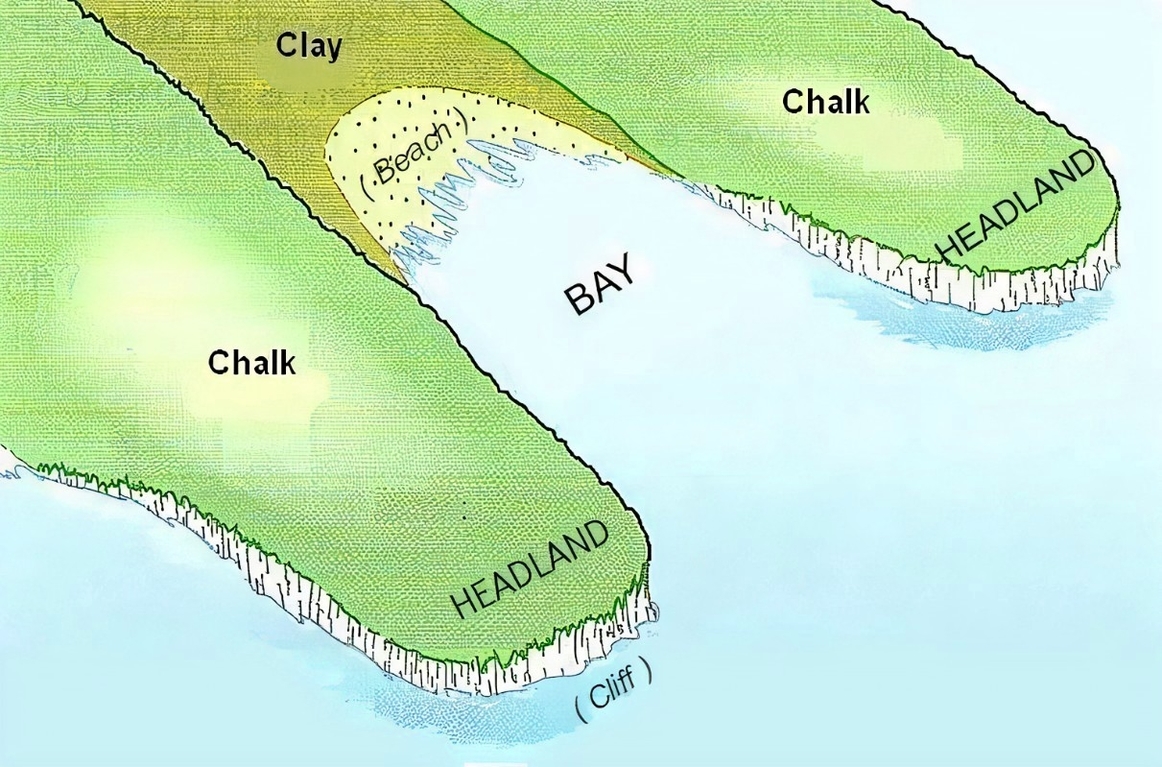
Headlands and bays are geological features that are commonly found along coastlines. A headland is a piece of land that extends out into the sea, while a bay is an indentation in the coastline where the land curves inward. Headlands and bays are formed by the erosion of rock by the sea. The process of erosion is caused by the action of waves, which can be very powerful and can wear away rock over time.
Headlands are formed from hard rock that is more resistant to erosion, such as limestone, chalk, and granite. They form along discordant coastlines where bands of soft and hard rock outcrop at a right angle to the coastline. Due to the different nature of rock, erosion occurs at different rates. Less resistant rock, such as boulder clay, erodes more rapidly than more resistant rock, such as chalk. The bands of soft rock, such as sand and clay, erode more quickly than those of more resistant rock, such as chalk. This leaves a section of land jutting out into the sea called a headland.
Bays are formed by the erosion of soft rock around the headland. Sandy beaches are often found in the sheltered bays where waves lose energy, and their capacity to transport material decreases resulting in material being deposited. The areas where the soft rock has eroded away, next to the headland, are called bays.
The geology of the coastline plays a significant role in the formation of headlands and bays. Where the geology alternates between strata (bands) of soft and hard rock perpendicular to the coast, headlands and bays are formed. The sea erodes the softer rock faster than the harder rock, forming a bay. The harder rock that is left protruding into the sea is the headland.
Concordant coastlines tend to have fewer bays and headlands. Along the coastline of Dorset, there are concordant and discordant coastlines. The concordant coastline runs from west to east along the south coast. The discordant coastline runs from Studland Bay to Durlston Head as the geology changes from clay and sands, to chalk, to clay and sands again to limestone.
In summary, headlands and bays are geological features that are formed by the erosion of rock by the sea. Headlands are formed from hard rock that is more resistant to erosion, while bays are formed by the erosion of soft rock around the headland. The geology of the coastline plays a significant role in the formation of headlands and bays. Concordant coastlines tend to have fewer bays and headlands. The alternating bands of soft and hard rock perpendicular to the coast are what create the conditions for the formation of headlands and bays.
